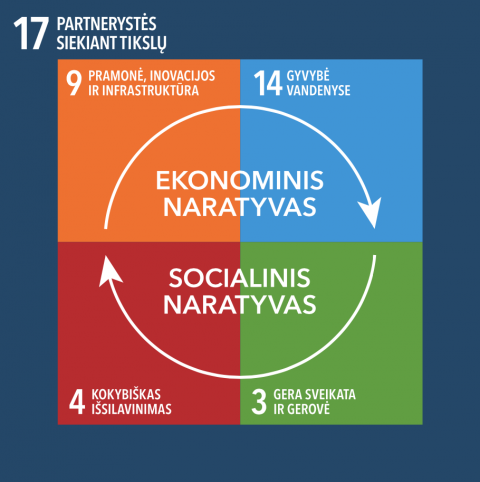Sustainable regional development: identity, values and external forces
| Numbers | |
| 7 | municipalities |
| 317 | thous. population |
| 5 | directions for regional development |
Emerging bottom-up approach is reshaping a variety of governmental and managerial structures. It proves that empowering people is effective and efficient when they are directly involved.
As a rule of thumb, people know more about their localities and they care deeper about strategies they participate in from the beginning.
While working with Klaipėda region (Lithuania), our team created a specific workshop structure based on Sustainable Development Goals (SDGs), Creative Placemaking and Art of Hosting practises. The architecture of the process enabled us to extract valuable information, perspectives and insights in a short period of time. Everybody became “owners” of the deliverables.
The values exercised locally by the stakeholders pointed out the focus on partnership development, quality of education, innovative infrastructure and manufacturing, wellbeing, and blue economy. The trajectory integrally reflects the Sustainable Development Goals framework by the United Nations.


Our team focused on specific historical and sociocultural elements of the region to properly form an in-depth understanding of the identity. Klaipėda region is a unique territory not only as a coastal area, but also as a specific historical and cultural domain. This region has undergone and is still in the process of a constant change. The defining state of the region is in- between: between land and sea, between different waters, between the resort and the city, between quite and business, between nature and infrastructure, between Helsinki and Kaliningrad, between creativity and reactivity.
The forces shaping regions future was analyzed through three angles (Local situation, International trends, Nacional priorities) and the relationship between them (Innovation, Sustainability, Impact). It appeared that nationally localized SDGs coincides with the vision of the region: sustainable cooperation, quality education, innovative economy, health and well-being are common values between the region and national approaches to further development. Accordingly, it revealed the five main ambitions of the region: Educating region, Prosperous region, Region of added value, Region of blue economy, Open region.
Regional development has to correspond with the context of a place. This identification forms a strategic path for sustainable growth. Without the context regions are destined to create for themselves constant interferences making all the actions difficult to execute.
Moving to more sustainable growth increases the region's resilience to crises and builds active resilience to prevent them.
Such sustainable and future-oriented growth requires regional leadership - the engaging work of all stakeholders acting together for the development of the region. The understanding of what the region is and how it should move further provides the conditions to take the responsibility and claim the leadership in sustainable regional development on a national and international scale.
*The main principle defining the whole systemic approach to the case was based on M. Heidegger’s Dasein notion.
Summary: https://bit.ly/37b4tYN